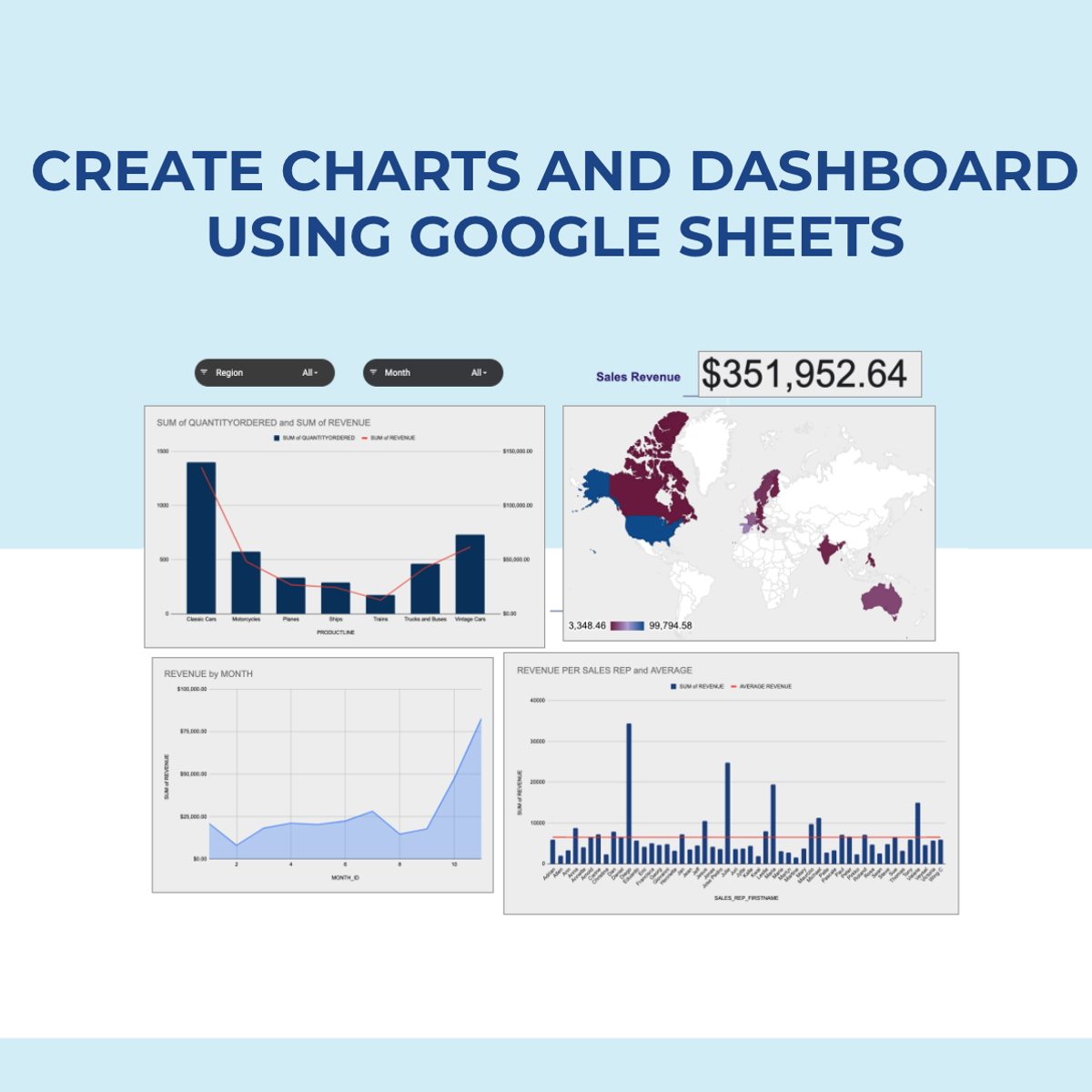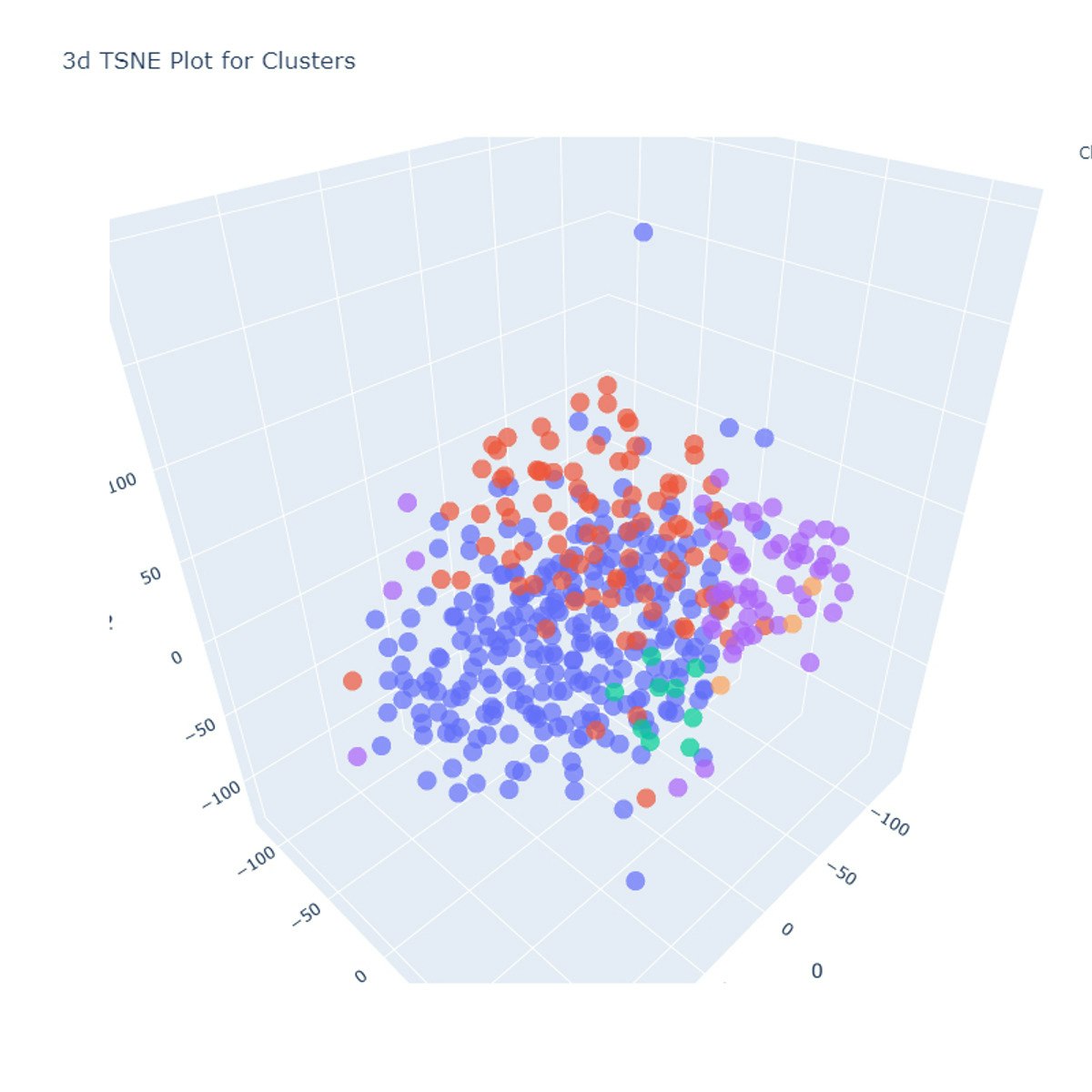Back to Courses









Data Science Courses - Page 76
Showing results 751-760 of 1407

Relational database systems
Welcome to the specialization course Relational Database Systems. This course will be completed on six weeks, it will be supported with videos and various documents that will allow you to learn in a very simple way how several types of information systems and databases are available to solve different problems and needs of the companies.
Objective:
A learner will be able to design, test, and implement analytical, transactional or NoSQL database systems according to business requirements by programming reliable, scalable and maintainable applications and resources using SQL and Hadoop ecosystem.
Programming languages:
For course 1 you will use the MYSQL language.
Software to download:
MySQL
Workbench
In case you have a Mac / IOS operating system you will need to use a virtual Machine (VirtualBox, Vmware).

Create Charts and Dashboard using Google Sheets
In this 2-hour long project-based course, you will learn how to create effective charts and a dynamic dashboard to visualize data sets. You will be able to work with vlookups, pivot tables and basic formulas and be able to create dynamic charts, sparklines, and a robust, dynamic dashboard to present the data.
By the end of the project you will be able to:
- Understand the terminologies of spreadsheets
- Work with basic formulas in Google Sheets
- Create 8 Basic Charts for visualizing data
- Generate Dynamic Charts from a dropdown list
- Generate Sparklines to represent data
- Build a dashboard and introduce Basic and Advanced Charts
- Use Slicers to filter data and create a robust and dynamic dashboard
Note: If you don't have a Google account, you will need to create one to be able to complete the content.

Capstone: Create Value from Open Data
The Capstone project is an individual assignment.
Participants decide the theme they want to explore and define the issue they want to solve. Their “playing field” should provide data from various sectors (such as farming and nutrition, culture, economy and employment, Education & Research, International & Europe, Housing, Sustainable, Development & Energies, Health & Social, Society, Territories & Transport). Participants are encouraged to mix the different fields and leverage the existing information with other (properly sourced) open data sets.
Deliverable 1 is the preliminary preparation and problem qualification step. The objectives is to define the what, why & how. What issue do we want to solve? Why does it promise value for public authorities, companies, citizens? How do we want to explore the provided data?
For Deliverable 2, the participant needs to present the intermediary outputs and adjustments to the analysis framework. The objectives is to confirm the how and the relevancy of the first results.
Finally, with Deliverable 3, the participant needs to present the final outputs and the value case. The objective is to confirm the why. Why will it create value for public authorities, companies, and citizens.
Assessment and grading: the participants will present their results to their peers on a regular basis. An evaluation framework will be provided for the participants to assess the quality of each other’s deliverables.

Getting Started with Power BI Desktop
In this 2-hour long project-based course, you will learn the basics of using Power BI Desktop software. We will do this by analyzing data on credit card defaults with Power BI Desktop. Power BI Desktop is a free Business Intelligence application from Microsoft that lets you load, transform, and visualize data. You can create interactive reports and dashboards quite easily, and quickly. We will learn some of the basics of Power BI by importing, transforming, and visualizing the data.
This course is aimed at learners who are looking to get started with the Power BI Desktop software. There are no hard prerequisites and any competent computer user should be able to complete the project successfully.
Note: This course works best for learners who are based in the North America region. We’re currently working on providing the same experience in other regions.

Build a Clustering Model using PyCaret
In this 1-hour long project-based course, you will create an end-to-end clustering model using PyCaret a low-code Python open-source Machine Learning library.
The goal is to build a model that can segment a wholesale customers based on their historical purchases.
You will learn how to automate the major steps for building, evaluating, comparing and interpreting Machine Learning Models for clustering.
Here are the main steps you will go through: frame the problem, get and prepare the data, discover and visualize the data, create the transformation pipeline, build, evaluate, interpret and deploy the model.
This guided project is for seasoned Data Scientists who want to build a accelerate the efficiency in building POC and experiments by using a low-code library. It is also for Citizen data Scientists (professionals working with data) by using the low-code library PyCaret to add machine learning models to the analytics toolkit.
To be successful in this project, you should be familiar with Python and the basic concepts on Machine Learning.

Statistical Analysis using Python Numpy
By the end of this project you will use the statistical capabilities of the Python Numpy package and other packages to find the statistical significance of student test data from two student groups.
The T-Test is well known in the field of statistics. It is used to test a hypothesis using a set of data sampled from the population. To perform the T-Test, the population sample size, the mean, or average, of each population, and the standard deviation are all required. These will all be calculated in this project.
Note: This course works best for learners who are based in the North America region. We’re currently working on providing the same experience in other regions.

Introduction to Neurohacking In R
Neurohacking describes how to use the R programming language (https://cran.r-project.org/) and its associated package to perform manipulation, processing, and analysis of neuroimaging data. We focus on publicly-available structural magnetic resonance imaging (MRI). We discuss concepts such as inhomogeneity correction, image registration, and image visualization.
By the end of this course, you will be able to:
Read/write images of the brain in the NIfTI (Neuroimaging Informatics Technology Initiative) format
Visualize and explore these images
Perform inhomogeneity correction, brain extraction, and image registration (within a subject and to a template).

Conducting Exploratory Data Analysis
Conduct exploratory data analysis with a systematic approach to investigate different aspects of your data: comparisons, relationships, compositions, and distributions. This guided project gives you a framework so you can conduct your own exploratory data analysis and make your work more professional and organized. The language is Python and the libraries used are seaborn, pandas, and matplotlib.

Mastering Data Analysis with Pandas: Learning Path Part 2
In this structured series of hands-on guided projects, we will master the fundamentals of data analysis and manipulation with Pandas and Python. Pandas is a super powerful, fast, flexible and easy to use open-source data analysis and manipulation tool. This guided project is the second of a series of multiple guided projects (learning path) that is designed for anyone who wants to master data analysis with pandas.
Note: This course works best for learners who are based in the North America region. We’re currently working on providing the same experience in other regions.

Introduction to SQL Window Functions
Welcome to this project-based course Introduction to SQL Window Functions. This is a hands-on project that introduces SQL users to the world of window functions. In this project, you will learn how to explore and query the project-db database extensively. We will start this hands-on project by retrieving the data in the table in the database.
By the end of this 2-hour-and-a-half-long project, you will be able to use different window functions to retrieve the desired result from a database. In this project, you will learn how to use SQL window functions like ROW_NUMBER(), LEAD(), LAG(), and FIRST_VALUE() to manipulate data in the project-db database. These window functions will be used together with the OVER() clause to query this database.
Popular Internships and Jobs by Categories
Find Jobs & Internships
Browse
© 2024 BoostGrad | All rights reserved